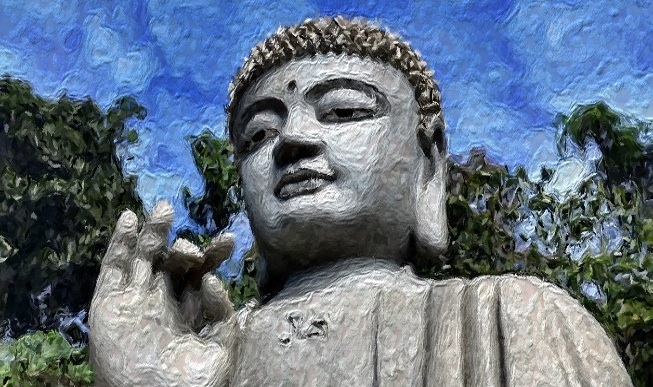The three marks of existence
The Buddha taught that there are three marks of existence: impermanence (anicca), suffering (dukkha), and no-self (anatta). It was only when Gautama Buddha gained complete insight into these three truths that he became enlightened, which is characterized by “unshakeable liberation of mind.”
All three of these marks are of paramount importance in understanding and practicing Buddhism, especially if one plans to undertake Buddhist meditation. The Buddha described meditation as “the heart of the path to liberation.” However, one of these marks in particular is regarded within the central doctrine of all sects of Buddhism.
The truths about dukkha
Dukkha is the Pali word most commonly translated as suffering or dissatisfaction. It is said to be the very reason the Buddha first entered the spiritual life as an ascetic. As such, Buddhist teachings revolve around four truths, which Buddhists refer to as The Four Noble Truths.
1. There is suffering.
2. There is an origin of suffering.
3. There is an end to suffering.
4. There is a way that leads to the end of suffering.
Each truth is of equal importance to understand, and each one encompasses subtler truths. However, the first three items revolve around understanding the reasons for suffering while the fourth offers a practical guide for realizing an end to suffering. So, for the sake of this brief introduction, I will only expound upon the last truth.
The Path to Liberation
The Buddha set out a very specific path to achieving the cessation of suffering. Gautama Buddha taught that by practicing meditation in accordance with this path, and thereby living in accordance with the path, we could become fully awakened beings. It is The Noble Eightfold Path.
1. Right View: Seeing reality as it truly is.
2. Right Intention: Using our will to change those unskillful aspects of our personality and way of life.
3. Right Speech: Choosing our words consciously and carefully so that what we say does not propagate unnecessary suffering.
4. Right Action: Choosing our actions consciously and carefully so that what we do does not propagate unnecessary suffering.
5. Right Livelihood: Engaging in work that does not bring suffering to oneself or others.
6. Right Effort: Persistence on the path to abandon all unskillful thought and behavior, and to cultivate skillful habits of thought, speech, and action.
7. Right Mindfulness: Awareness of all things that affect us mentally, emotionally and physically.
8. Right Concentration: Basically refers to meditation wherein focus is placed on one thing (sensation, object, thought) until full concentration is reached, and one can move into jhana (extreme meditative absorption).
If I’ve sparked your interest, I urge you to do some research on your own. Or you can wait for part 2, where I will go into further detail on the Eightfold Path and Jhana. OR if you can’t wait and don’t want to spend time doing research, take a look at Buddhism Plain and Simple, by Steve Hagen and for something more in depth, The Heart of the Buddha’s Teaching: Transforming Suffering into Peace, Joy, and Liberation
by Thich Nhat Hanh.
Wishing you peace of mind this Thursday.
By Terence Stone
If you enjoyed this article and want to get involved, please subscribe to the blog, like us on facebook, and follow us on twitter or Google+.


Buddha is probably more of human embetterment than a religion.
I would tend to agree!